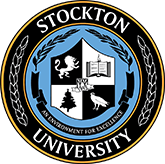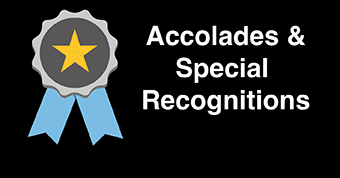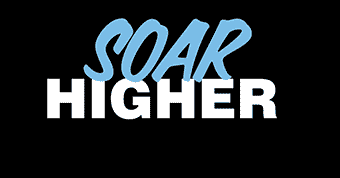Stockton University Ombuds Office Annual Report FY 2024-25*
 Karen A. Reardon, PhD, JD
Karen A. Reardon, PhD, JD
Introduction
This annual report covers the FY 2024/25 during which the Ombuds Office was staffed by one 50 % part-time Ombuds Officer. This report details 12 months of activity which one should keep in mind when comparing it to the prior FY23/24 report which covered only 7 months of activity reflecting that this role was vacant for the first 5 months of FY23/24.
The Ombuds Office plays an important role for employees who seek a safe place to speak freely about concerns and challenges they have as members of the University community. When individuals bring problems to the Ombuds Office, I share office protocols and work to understand the circumstances that occasioned their outreach. We explore options to address their concerns through information gathering and coaching. I refer visitors to university policies and internal resources, and, when appropriate, to external resources. A key strategy employed is to serve as a neutral intermediary or facilitator between and among parties who wish to discuss issues, concerns, and conflicts, either by facilitating conversation or through shuttle diplomacy whereby I act as a conduit between parties who are unable or unwilling to communicate directly. All interaction with the Ombuds Office is fully voluntary and discussions are confidential, No action is taken without a visitor’s permission. Table 1 elaborates on the nature of the services offered.
| Type of Engagement | Engagement Description |
|---|---|
|
Exploration of Options |
Listen to visitor’s concerns and help identify possible avenues for resolution and alternative resources and strategies, and weigh relative merits of options. |
|
Coaching |
Provide visitor with alternative approaches and methods; role play and rehearse communications; help visitor plan next steps; advise on choice of language, tone, etc. |
|
Information Gathering |
Reach out directly to Stockton resources to gather information pertinent to dispute resolution. |
|
Referral to University Policy |
Direct visitor to formal University policies, procedures, and practices. |
|
Referral to Internal University Resource |
Provide visitor with description of, and contact information for potentially useful resource(s) within the University. |
|
Referral to External Resource |
Provide visitor with description of ,and contact information for potentially useful resource(s) outside the University. |
|
Mediation/Facilitated Conversation (offered and/or facilitated) |
Offer to serve as neutral intermediary for parties to discuss issues, concerns, conflicts, etc., and facilitate upon mutual agreement. |
|
Shuttle Diplomacy |
Serve as conduit between parties who cannot or are not willing to communicate directly with each other. |
The Year in Review
Most initial visitor outreach to the office occurred by email which I promptly acknowledge. At that time, visitors are provided with written guidelines for working with the Ombuds Office. Almost all visitors met with the Ombuds Officer in person though a few asked to and connected remotely.
Visitors remarked that they reached out after reviewing the Ombuds Office web page, at the suggestion of a colleague, or because of outreach made by the Ombuds Officer at meetings such as those convened by the faculty and staff senates or unions, individual departments, committees and the Ombuds Office itself.
During the FY 2024/25, the office opened 86 visitor cases; the Ombuds Office interfaced with others involved for a total of 158 meetings with individuals in connection with those 86 cases. These meetings included 2 work group facilitations each involving 6+ people. Non-faculty union staff accounted for the largest proportion of visitors (40+%), followed by non-union staff (36%), faculty (17%), and leadership (President's and Provosts' Offices, VPs, Deans) (7%). See Table 2. Visitors to the office come from all divisions of the employee community. Table 3 shows the breakdown of visitors by affiliation to the University.
The Ombuds Office records the nature of issues brought forward using broad categories employed in the ombuds community to facilitate comparisons over time. The most frequent issues raised pertain to general employment- related issues (e.g., job performance or compatibility, discipline, or interpersonal issues, conflict, miscommunication, managing up and supervisory coaching, etc.) accounting for 30% of total issues followed by cases involving general university policy and procedures (14%) with personal behaviors (e.g., abusive, abrasive, and inappropriate conduct; discrimination; bullying, micromanagement) and general institutional issues each accounting for 12% of cases. See Table 4.
My analysis identified some consistent themes:
-
Microaggressions, bullying, and inappropriate behavior are frequently reported. It is essential for behavioral expectations to be modeled by leaders consistent with the aspirational culture of care and dignity leadership model. Additionally, University-wide in-person training that addresses toxic work environments, bullying, discrimination, and microaggressions should be developed, presented, and mandated for all employees. In person training and development should be considered for all employees and not limited to management, to set a university-wide expectation for behaviors. Consideration should be given to expanding training and development staff to accomplish this goal.
- Lack of Confidence in Management Supervisors is a growing theme. Visitors report that supervisors are neglecting the duty to supervise where corrective action is needed and frequently engage in micromanagement which interferes with the employee’s ability to discharge responsibilities efficiently and effectively. Visitors question such supervisors’ competence. They continue to complain that supervisors, to hold onto power, are not allowing them to do material parts of their jobs by withholding access to data, information, or training. Consequently, I am seeing more visitors needing and wanting coaching as to how to “manage up and around.”
| Leadership |
7% |
6 |
|
Non Union Management |
36% | 31 |
|
Union Management and Staff |
40% |
34 |
|
Faculty |
17% |
15 |
| 86 |
I continue to deliver presentations to various university constituent groups on the structure and function of the Office of Ombuds and developed a strategic plan for the office, including a formal charter now found on the Ombuds webpage. In association with the President’s Office, the Provost and Human Resources, I pioneered “Cultivating Dignity’, a video series to educate the community about behaviors that align (and do not align) with the Ethic of Care to which President Bertolino has asked the community to aspire. Completed videos are hosted on the Ombuds Office webpage through the Continuing Education link.
| Arts and Humanities | 3 |
| Business | 8 |
| Education | 2 |
| Enrollment Management | 9 |
| Facilities and Operations | 15 |
| Administration and Finance | 1 |
| General Studies | 2 |
| Health Sciences | 6 |
| Natural Sciences and Mathematics | 12 |
| Academic Affairs | 5 |
| Social and Behavior Sciences | 2 |
| Student Affairs | 14 |
| University Advancement | 7 |
| Other or Unknown | 0 |
The Ombuds Office is located in L208. It can be reached by email at ombuds@stockton.edu. Please consult the webpage for more information about the office and its activities. I respond to inquiries quickly and encourage anyone experiencing difficulties related to their work as a member of the Stockton community to contact the Ombuds Office. All outreach to the Ombuds Office is confidential except in matters involving child abuse, threat of imminent harm and violations of court order which the Ombuds Officer has a duty to report.
| Issue Category | Issue Definition | Frequency FY 2024-25* | |
|---|---|---|---|
| Academic Related | Academic, General | General academic matters involving students or faculty. | 3 |
| Academic Integrity | Honesty in academic pursuits, e.g., plagiarism, cheating, misrepresentation of academic records, fabrication, unfair advantage. | 2 | |
| Academic Procedures | Formal (explicit or implicit) policies, procedures, and practices that regulate academic pursuits, interests and tenure. | 2 | |
| Academic Standards | Matters relating to fairness and accuracy or rationales for academic standards of achievement. | 2 | |
| Academic Research | Research results, interpretations, explanations, and associated authorship and intellectual property rights. | 0 | |
| Employment Related | Employment, General | Matters relating to job performance or compatibility, discipline, or interpersonal issues relating to role as an employee. | 36 |
| Employment, Promotion | Career advancement to higher level; tenure. | 4 | |
| Employment, Compensation | Rate of pay, salary amount, equity, or competitiveness. | 6 | |
| Employment, Benefits | Rewards or compensation (other than wages and salary) associated with employment status and their equity, competiveness, or administration. | 7 | |
| Employment, Procedures | Formal (explicit or implicit) policies and practices that regulate the employment relationship. | 9 | |
| Behavior | Abrasive/Abusive/ Inappropriate Behavior | Demonstration of inappropriate treatment of others, e.g., abusive, threatening, coercive behavior; rudeness, crudeness; acts or threats of violence. | 11 |
| Sexual Harassment | Unwelcome physical, verbal, written, electronically transmitted, etc. conduct of a sexual nature that creates a hostile or intimidating environment. | 1 | |
| Discrimination | Disparate treatment tied to protected status (race, gender, age, national origin, religion, etc.) | 6 | |
| Other | Procedures, General | General matters relating University policies, procedures, or practices. | 12 |
| General Institutional Issues | Operational issues, hiring practices, organizational structure, leadership practices, health and safety | 11 | |
| Union Contract Interpretation | Time and Attendance, Reassignment, Reclassification. | 2 | |
| Miscellaneous | Outside Scope of Ombuds Office, Unknown/No Follow Up After Initial Outreach. | 7 | |
| Total Issues | 121 | ||
* Because individual visitors at times raise more than one issue, the total number of visitor issues (121) is greater than the total number of cases initiated during this period (86).
+This report was built on a template and report created by, and liberally uses language of, University of Pennsylvania Ombuds Dr. Jennifer Pinto-Martin.


